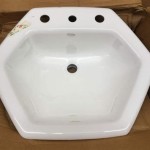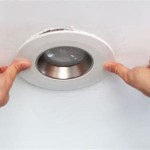Why Does My Cat Sit In the Bathroom Sink?
The tendency of domestic cats to occupy bathroom sinks is a common observation among cat owners. This behavior, seemingly inexplicable to humans, is rooted in a complex interplay of feline instincts, environmental preferences, and individual personality. Understanding the various factors that contribute to this behavior provides valuable insight into the cognitive and physical needs of domesticated felines.
Temperature Regulation and Comfort
One primary driver of a cat’s affinity for bathroom sinks is temperature regulation. Cats, like all mammals, strive to maintain a stable internal body temperature. The bathroom environment, and the sink in particular, often offers thermal properties that appeal to felines. In warmer climates or during warmer seasons, the porcelain or ceramic material of the sink provides a cool, smooth surface that helps dissipate body heat. The coolness is due to the material's high thermal conductivity, which efficiently draws heat away from the cat's body. This is particularly beneficial for cats with thick fur coats, making the sink a preferred spot for thermoregulation.
Conversely, in cooler environments, a slightly warmer sink can be equally appealing. If the room is heated, the sink might retain a minimal amount of residual heat, providing a more comfortable surface than colder areas in the house. The sink's enclosed nature also offers some protection from drafts, further contributing to its desirability as a resting place during cooler periods. Furthermore, if running water is occasionally present, the dampness of the sink can contribute to evaporative cooling, a process that further enhances its thermal advantages.
The curvature of the sink’s basin also provides a comfortable and secure feeling for the cat. It is a natural instinct of cats to seek out confined spaces, as it provides a sense of safety and security. The sink's shape allows the cat to curl up and rest comfortably, feeling protected from perceived threats and potential disturbances. This feeling of enclosure is reminiscent of the security kittens experience within the confines of their mother's nest.
The Quest for Fresh, Running Water
Another significant factor influencing a cat's attraction to the bathroom sink is its association with water sources. Cats are naturally drawn to fresh, running water, a preference that stems from their evolutionary history. In the wild, stagnant water sources often harbor harmful bacteria and parasites, making flowing water a safer and more appealing alternative. The bathroom sink, therefore, represents a readily accessible source of potentially fresh water.
Even if the faucet is not actively dripping, cats may still perceive the sink as a place where water is likely to be found. The sound of dripping water, even faint, can stimulate a cat's curiosity and draw it towards the sink. The cat may then lick the faucet or the surface of the sink in an attempt to quench its thirst. This behavior is consistent with the observation that many cats prefer to drink from faucets over traditional water bowls, even when fresh water is readily available.
The height of the sink can also be a contributing factor. Cats generally prefer to drink from elevated surfaces, as this allows them to maintain a better field of vision and detect potential threats while they are vulnerable. The height of the sink places the water source at a more natural and comfortable drinking level, reducing strain on the cat's neck and back. This preference for elevated water sources is often overlooked by cat owners, who tend to place water bowls on the floor.
Furthermore, the smooth, non-porous surface of the sink is generally easier to keep clean than a traditional water bowl. This is a significant advantage from the cat's perspective, as cats are highly sensitive to the cleanliness of their environment. A clean water source is more appealing and less likely to harbor harmful bacteria, making the bathroom sink a preferred drinking spot.
Territoriality, Security, and Attention Seeking
Beyond temperature regulation and water access, territoriality and attention-seeking behaviors also play a role in a cat's penchant for bathroom sinks. Cats are territorial animals that mark their environment with olfactory signals, such as scent glands located on their face and paws. By rubbing against the sink or simply occupying it, a cat may be marking the area as its own, asserting its presence within the household.
The bathroom, being a relatively small and enclosed space, can provide a sense of security for some cats. The limited number of entry and exit points makes it easier for the cat to monitor its surroundings and detect potential threats. The sink, in turn, offers an elevated vantage point from which the cat can observe the activities of its human companions, while still feeling somewhat protected and secluded.
In some cases, a cat's occupation of the bathroom sink may be interpreted as a form of attention-seeking behavior. Cats are intelligent and observant creatures that quickly learn which behaviors elicit a response from their human companions. If a cat receives attention or interaction when it is sitting in the sink, it may repeat the behavior in the future to elicit a similar reaction. This attention can be in the form of verbal praise, petting, or even simply being acknowledged.
The bathroom is often associated with human activity, such as grooming and bathing. Cats, being social animals, may be drawn to these activities and seek to participate in them. By sitting in the sink, the cat may be attempting to be closer to its human companions and engage in social interaction. This behavior is particularly common in cats that are highly bonded to their owners and seek constant companionship.
It's also possible that the cat enjoys the echoes and acoustics of the bathroom. A cat's hearing is far more sensitive than a human's, and the echoes in the bathroom may be stimulating for the cat. Also, the cat may enjoy the texture of the sink. The smooth cool surface may provide tactile stimulation that the cat finds enjoyable.
Finally, the cat may simply like the way the sink looks! Cats have preferences, some like to sit on soft surfaces, others on firm surfaces. The sight of the smooth, white expanse of the sink may be aesthetically pleasing to the cat, and simply the beauty of the sink may be the reason the cat likes to sit there. This is especially true if the sink is kept very clean. Cats are naturally drawn to cleanliness.
In conclusion, a multitude of factors contribute to the seemingly quirky behavior of cats occupying bathroom sinks. These factors encompass physiological needs, environmental preferences, and behavioral motivations. By understanding these underlying drivers, cat owners can gain a deeper appreciation for their feline companions and provide them with an environment that caters to their specific needs and preferences.

Cats In Sinks The Reason For Your Pet S Weird Habit
Why Does My Cat Enjoy Laying In The Sink Quora

Why Are Cats Obsessed With Sinks Drains And Faucets Beyond Just Their Function As A Drinking Source Quora

Why Does My Cat Guard Me When I Go To The Bathroom Cats Com
Why Does My Cat Enjoy Laying In The Sink Quora
:strip_icc()/cats-in-the-bathroom-554029-04-0315e4f518e548aab427bd7d382e70df.jpg?strip=all)
7 Reasons Why Cats Love Bathrooms
Why Do Cats Love To Sleep In Bathroom Sinks Quora

Why Is My Cat Obsessed With The Sink 6 Reasons Cats Com
:strip_icc()/cats-in-the-bathroom-554029-hero-3d3735d295614a38bad346da9edac558.jpg?strip=all)
7 Reasons Why Cats Love Bathrooms

Why Do Cats Like To Sleep In Sinks Mental Floss
Related Posts







